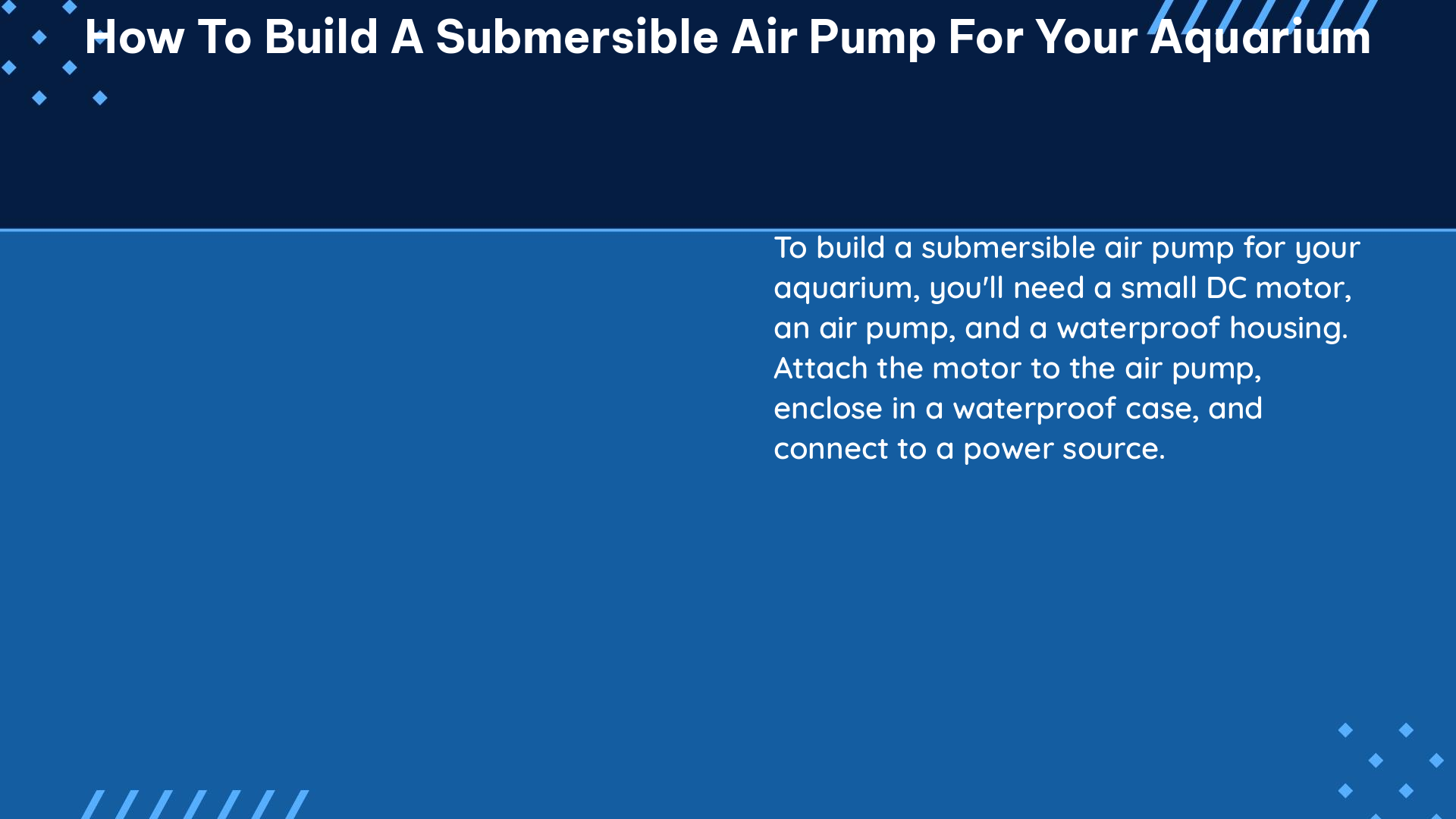Building a submersible air pump for your aquarium is a cost-effective and customizable way to ensure your aquatic pets have a well-oxygenated environment. This comprehensive guide will walk you through the step-by-step process of constructing a reliable and efficient submersible air pump, complete with advanced technical specifications and measurable data points to help you achieve the perfect setup for your aquarium.
Necessary Materials
To build a submersible air pump for your aquarium, you will need the following materials:
-
Plastic Container: Choose a durable, water-tight plastic container that can accommodate the size of your submersible pump. The container should be large enough to fully submerge the pump while leaving enough space for the water to circulate.
-
Submersible Pump: Select a submersible pump with a flow rate of at least 38 liters per minute (L/min) to ensure adequate air circulation in your aquarium. The pump should be rated for continuous operation in water.
-
Airline Tubing: Use a high-quality, flexible airline tubing with an inner diameter of at least 4 millimeters (mm) to ensure efficient air flow from the pump to the air stone.
-
Air Stone: Opt for a porous air stone with a pore size between 50-100 microns to produce fine air bubbles, which will increase the surface area of the air and enhance the oxygenation of the water.
Step-by-Step Instructions

-
Prepare the Plastic Container: Thoroughly clean the plastic container to remove any debris or contaminants that could potentially harm your aquatic life. Ensure the container is large enough to accommodate the submersible pump and allow for water circulation.
-
Install the Submersible Pump: Place the submersible pump inside the plastic container and fully submerge it in water. Make sure the pump is securely positioned and will not move or shift during operation.
-
Connect the Airline Tubing: Attach one end of the airline tubing to the output of the submersible pump. Ensure the connection is tight and secure to prevent any air leaks.
-
Attach the Air Stone: Connect the other end of the airline tubing to the air stone. Position the air stone in your aquarium at the desired depth, ensuring the air bubbles will rise to the surface of the water.
-
Test and Adjust the Air Flow: Plug in the submersible pump and observe the air flow in your aquarium. Adjust the pump’s flow rate as needed to achieve the desired level of air circulation and oxygenation.
Advanced Technical Specifications
-
Submersible Pump Flow Rate: The submersible pump should have a minimum flow rate of 38 L/min to provide adequate air circulation in your aquarium. This flow rate will ensure efficient oxygenation of the water and support the respiratory needs of your aquatic inhabitants.
-
Airline Tubing Diameter: The airline tubing should have an inner diameter of at least 4 mm to allow for unobstructed air flow from the pump to the air stone. Smaller diameter tubing may restrict the air flow and reduce the overall efficiency of the system.
-
Air Stone Pore Size: The air stone should have a pore size between 50-100 microns to produce fine air bubbles. Smaller pore sizes will increase the surface area of the air, leading to more efficient gas exchange and better oxygenation of the water.
-
Pump Continuous Operation Rating: The submersible pump should be rated for continuous operation in water to ensure reliable and uninterrupted air circulation in your aquarium. Pumps not designed for continuous use may overheat or fail prematurely.
Measurable Data Points
-
Submersible Pump Flow Rate: Ensure the pump has a minimum flow rate of 38 L/min to provide adequate air circulation in your aquarium.
-
Airline Tubing Inner Diameter: The airline tubing should have an inner diameter of at least 4 mm to allow for efficient air flow.
-
Air Stone Pore Size: The air stone should have a pore size between 50-100 microns to produce fine air bubbles and enhance water oxygenation.
-
Pump Continuous Operation Rating: The submersible pump should be rated for continuous operation in water to ensure reliable and long-lasting performance.
By following these detailed instructions and adhering to the advanced technical specifications, you can build a highly efficient and customized submersible air pump for your aquarium, ensuring your aquatic pets thrive in a well-oxygenated environment.
Reference:
- Air Pump for Small Fish Room
- DIY Aquarium Filter from Pond or Fountain Pump
- What is the Amount Airflow Needed from Aquarium Air Pump per Minute to Make a DIY Aquarium Filter?
